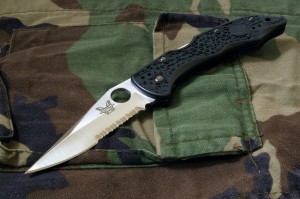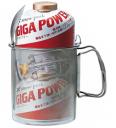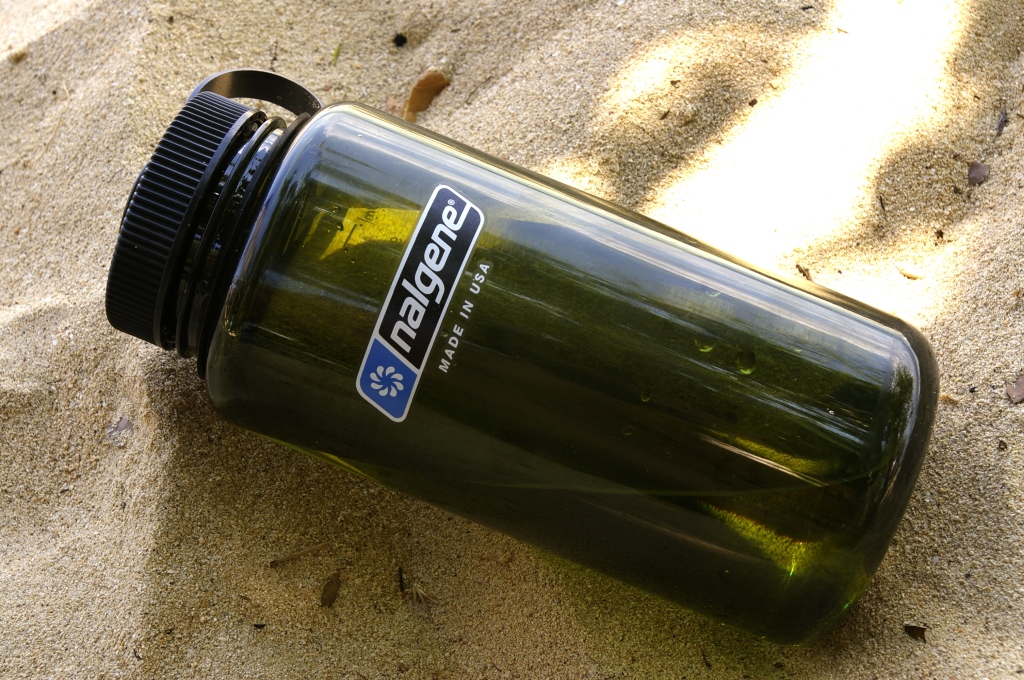Happy Fathers’ Day!
Michelle surprised me this morning with every man’s dream Fathers’ Day gift: A toolbox! And it comes with some screwdrivers and hex wrenches, too! Perfect for holding my growing collection of tools!
Love you, babe! :*
Happy Fathers’ Day!
Michelle surprised me this morning with every man’s dream Fathers’ Day gift: A toolbox! And it comes with some screwdrivers and hex wrenches, too! Perfect for holding my growing collection of tools!
Love you, babe! :*
 Since I lost my Gerber EZ-Out, I’ve been looking for a suitable replacement. I looked far and wide but haven’t been able to find one until recently: The Benchmade Pika II. It reminds me of the Benchmade AFCK which is a knife I’ve always liked. But there’s more to it than that.
Since I lost my Gerber EZ-Out, I’ve been looking for a suitable replacement. I looked far and wide but haven’t been able to find one until recently: The Benchmade Pika II. It reminds me of the Benchmade AFCK which is a knife I’ve always liked. But there’s more to it than that.
Let’s begin with the blade. It is 3.5″ long and is a modified clip-point with a partially-serrated edge. It has a big nice round ambidextrous thumb-hole. The steel is 9Cr13CoMoV from China but it’s said to be equivalent to 440C steel which has the highest strength, hardness and wear resistance of all the stainless alloys. Pretty good so far.
The handle is made of glass-filled nylon with molded “triple-grip” pattern. It was the thing I least liked about the knife as it was too intricate but it does seem to work. Polymer handles are pretty tough by themselves as I’ve experienced with my Gerber EZ-Out but Benchmade chose to further reinforce it with a steel inner lining. Nice but could be a problem when exposed to saltwater.
The locking mechanism is lockback. A lot of people don’t like lockbacks and opt for a whole bunch of new technologies like axis locks. But lockbacks seem fine to me so far. The lockback mechanism on the Pika II seems very well made with no slack or wobble whatsoever.
The clip is the one of the best thing about the Pika II. It is small, light, and very strong. But best of all, it can be relocated to 4 positions. You can carry the Pika II any way you like! There’s also a provision for a lanyard. Well-designed, indeed.
The Pika II is part of Benchmade red box line: “Best in class value”. The knives in the red box line are low-cost, well-designed, fully-functional, and made in China, Taiwan to be precise.
There’s actually nothing wrong with that. Over a decade ago, I got myself a clip-point lockback that was made in Taiwan. It had a good, sharp, stainless steel blade. The only thing wrong were some chrome plated fasteners that eventually rusted. But it did it’s job, and well. I expect the Pika II to do the same.
 Snow Peak claims their Trek Starter Kit is “the pinnacle of backpacking cookware”. It’s most definitely a lofty claim but I tend to agree with it.
Snow Peak claims their Trek Starter Kit is “the pinnacle of backpacking cookware”. It’s most definitely a lofty claim but I tend to agree with it.
Before, I relied on a Trangia mess kit to hold my Campingaz Twister CV270 stove (this has got to be the stove with the best bang for the buck), stainless steel utensils, and film canister condiment dispensers. The gas canister, I keep separately since it’s quite big. It’s a mixed bag of gear but somehow they worked very well for my needs and I was very happy with the system. Up until I misplaced the stove (doink!) and had to buy a new one.
I decided on the The Snow Peak Trek Starter Kit upon the recommendation of Bing. It is composed of a stainless steel Giga Power stove, a titanium pot with fold-out handles, a pot lid with a spout, and a titanium spork. Everything, including two gas canisters fit together in a carrying sack into a small, elegant, and light package.
But even better, everything works very well, too. The Giga Power is one awesome gas canister stove. I’ve always preferred gas canister stoves because of their small size, light weight, and ease of use. Their only problem is poor performance in the cold (not too much of a problem where I go) and wind (just add a windscreen).
Going back to the Giga Power, it screws on to the canister and its wire pot supports fold out to provide a stable platform. Ridges on the pot supports ensure that the pot stays in place. Turn the long (reduces the chance of accidentally touching hot parts) control valve, light it up, and see it burn HOT (10,000BTUs) ! If it had a piezoelectric igniter and maybe if it were titanium it would be perfect.
In the pot, you can cook noodles with egg for breakfast. Or cook rice topped with viand for lunch or dinner. Eat with the spork. Then afterward, boil chocolate or coffee and pour it out of the spout or drink from the pot itself (after cooling a bit, of course).
A kitchen in a small package. Need I ask for more?
Rating: 5/5
 I’ve heard about the durability of Nalgene bottles for the longest time but for cost reasons (they’re around P900 for a 1L bottle) I have put off getting one. That changed when I spotted Nalgene bottles selling at bargain prices (around P300 for a 1L bottle) on a recent trip to HK. I got one for myself and now I’m absolutely exultant. So what makes it so good?
I’ve heard about the durability of Nalgene bottles for the longest time but for cost reasons (they’re around P900 for a 1L bottle) I have put off getting one. That changed when I spotted Nalgene bottles selling at bargain prices (around P300 for a 1L bottle) on a recent trip to HK. I got one for myself and now I’m absolutely exultant. So what makes it so good?
I guess those are compelling enough reasons, yeah?
 This is in memory of my Gerber EZ-Out which I lost somewhere not so long ago.
This is in memory of my Gerber EZ-Out which I lost somewhere not so long ago.
The EZ-Out is a lockback folder with a modified clip point blade that is partially serrated. A non-serrated version was available but I chose the serrated version for the flexibility. The blade has a thumb hole for rapid opening with either hand.
Its handle is Zytel plastic with Kraton rubber inserts to provide better grip. The handle is pretty durable. The Kraton inserts disintegrated over the years and I had to remove them for aesthetic reasons. But the Zytel was still going strong.
Finally, it has a strong clip so it can be secured to your pocket. Unfortunately, it can’t be switched to the other side so if you prefer it on another side, you’ll have to compromise.
The total package is small, light, and handy. You can carry it everywhere. Which is what I did. I carried it at work, at play, to hills, the occasional mountain, caves, swims, and even dives. And through all these it often came in useful: cutting cardboard, rope, vines, wood, preparing food, even for prying. Even when it was not needed, it always gave me comfort that it was there ready for use.
I’m going to miss it.
Rating: 5/5